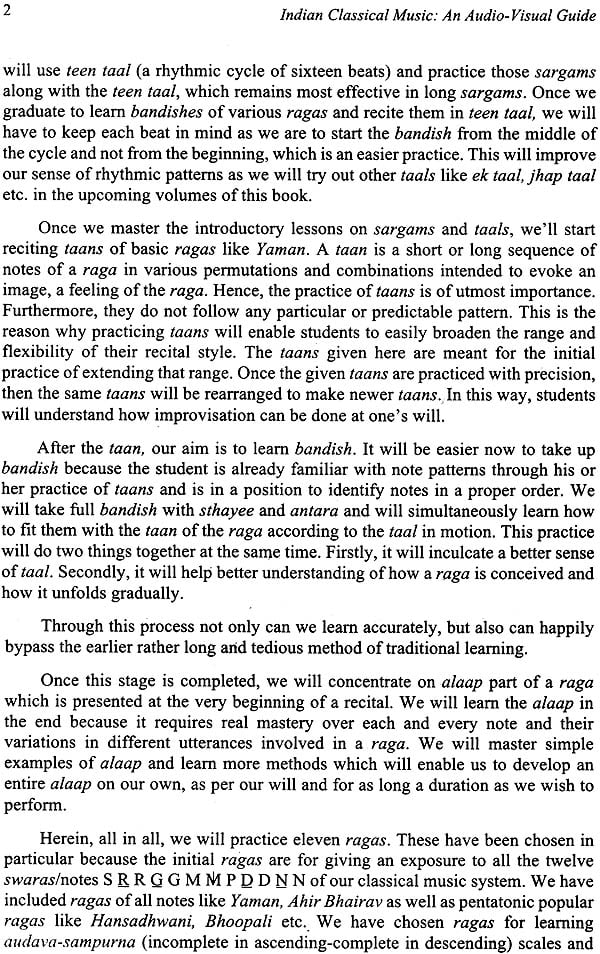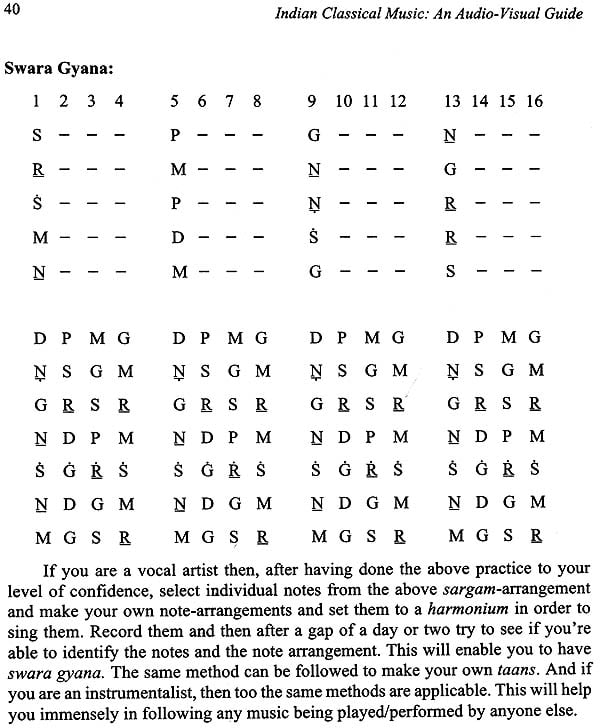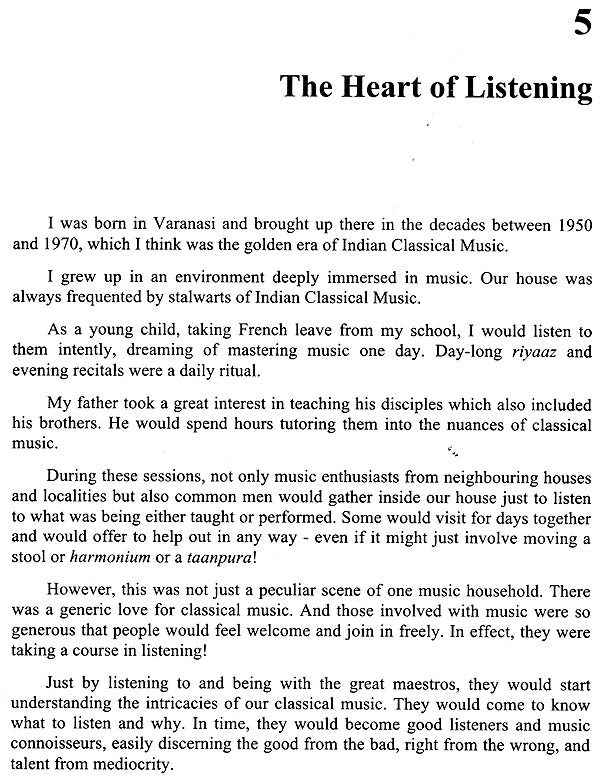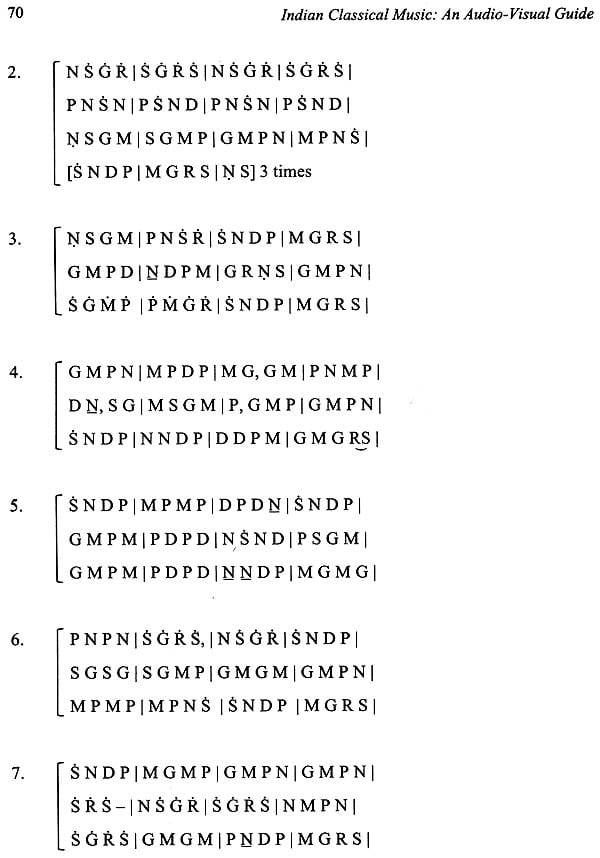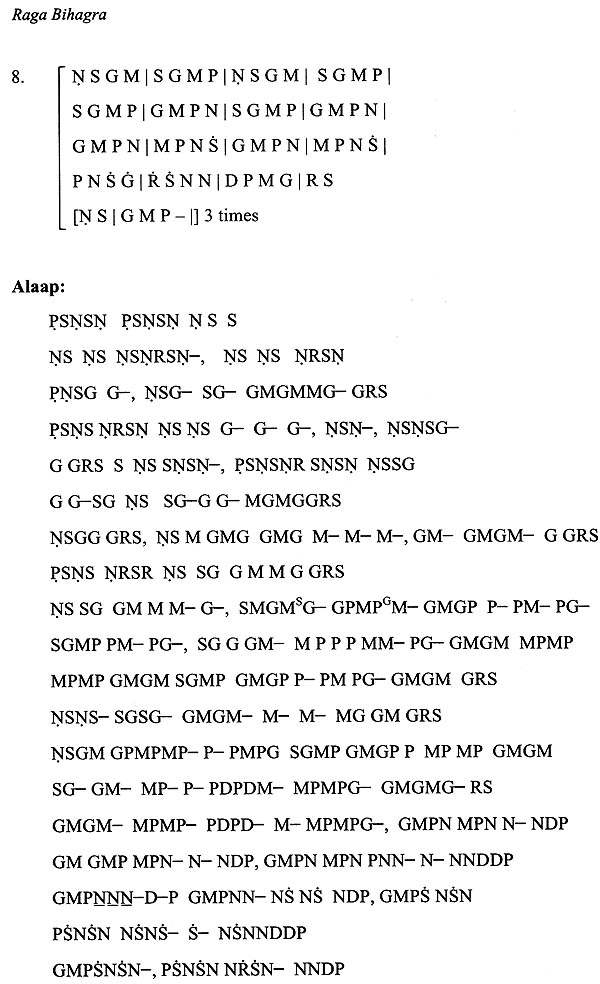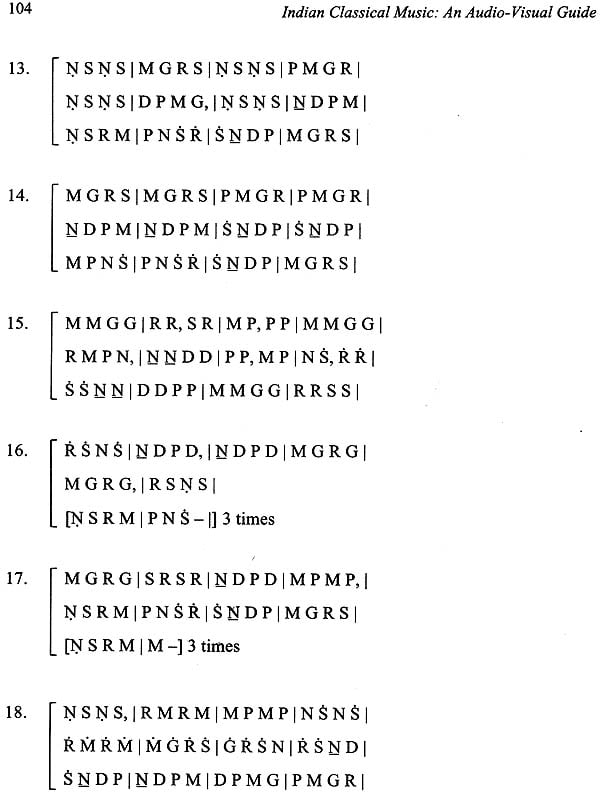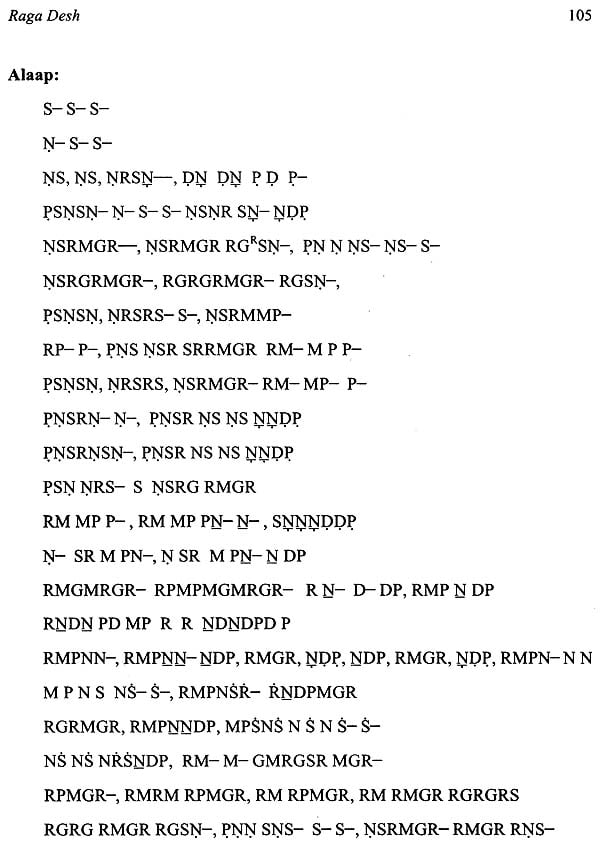
Indian Classical Music (An Audio Visual Guide)
Book Specification
| Item Code: | NAN865 |
| Author: | Pt. Ravi Shankar Prasanna |
| Publisher: | B.R. Publishing Corporation |
| Language: | English |
| Edition: | 2018 |
| ISBN: | 9788188827749 |
| Pages: | 138 (12 Color Illustrations) |
| Cover: | Hardcover |
| Other Details | 10.0 inch X 7.5 inch |
| Weight | 470 gm |
Book Description
Indian Classical Music is a timeless tradition with immense complexities. Over the centuries, methods of both learning and performing differed from time to time and place to place. This has given birth to a variety of schools with different styles of performance and practice. Today, therefore, there is no one standard method available to learn Indian Classical Music in a uniform manner.
In this book, I have humbly tried to suggest a unified method of learning, practicing and performing Indian Classical Music. I have tried to methodically simplify the gradual stages involved in the process. By following this, the reader can get initiated in the process of learning music. Various integral parts of a raga, like alaap, bandish, taan are systematically and carefully introduced, theoretically as well as practically. To help one understand and learn quickly and accurately, the reader has been provided with the audio-visual guide of each of the eleven ragas elaborated here.
There are many traditional bandishes in Indian Classical Music.
Once one has practiced a bandish, one can combine a few notes from it and improvise to make bols of bandish. Improvisations on bandishes are done as per individual preference and capability of particular artists, therefore at times they may sound different from one another. This is why the same bandish differs in practice when learnt from different teachers. However, there is nothing wrong in that practice as long as it follows the rules of a raga. It's interesting to note that some artists use the same bandishes for different ragas.
This book will help readers interested in Indian Classical Music to understand and appreciate classical music performances. This in turn will create an enthusiastic, well-informed, music literate audience truly able to appreciate the beauty and hard work necessary for learning and performing this wonderful genre of music.
Indian Classical Music is based on the idea of improvisation, therefore in this book emphasis has been added to acquire the skill of improvisation. To elaborate this, we have recorded and presented taans in a particular tempo. Firstly, one should master the taan in the given tempo, then one has to practice at a faster tempo too; this will help in mastering all the taans. Secondly, once the laya (tempo) is considerably in command, one will have to take up small sections of the different taans given and mix them to form taans of one's own to improvise on the raga. Here especially one has to be very particular as to the impeccability of the notes of the raga. Besides, in order to show mastery of art and influence the audience in the process of improvisation, one will also have to- go beyond the standard set pattern of picking up the taan from sum (first downbeat). With variety of pauses in command, one will have to pick up taans from different taal points (beat numbers) to bring out the beauty of near total control over the performance.
In an alaap, first of all one will have to follow the given recording. After one has succeeded in performing it exactly so, one will make combinations of the same notes according to the raga in different orders to bring out new patterns. The more the practice, greater would be the number of patterns added. That will be an alaap of one's own and one will also learn to lengthen one's alaap. The alaap given here is only a guiding sample. If you follow the alaap section in the video, your alaap will automatically be improvised and you will have a detailed idea as to how to go about it.
I have also given here innumerable taans for practicing. They follow a pattern and an order. Once students have been given sufficient listening practice, I generally take up bits and parts from an arranged version to give them practice for identification of notes and note arrangements. Then one has to practice on one's own by first listing the order of taans as given and then by arbitrarily taking up parts of taans for listening and identifying. This will enable students to pick up exact notes in time. Improvisation is to be done by taking up small parts of the taan given from different taans and rearranging them to make a new one. By watching the performance section videos, one will get familiar with these in practice. Taans given here are simple and basic for you to learn and improvise upon. Once students have got the idea of improvisation, then like an accomplished performing artist, one can pick up the taan at any point of a beat cycle with ease. The link IS given below:. One can use bandishes other than those given in this book and still recite the taans given here.
In practice when we unfold a raga, the raga itself gives us directions for the journey through and with it. The shrutis will automatically come if the notes are perfectly invoked. This is the only means by which one can reach out and get the shrutis in a raga, which otherwise arc very difficult to realize.
Here we have provided you with some ideas for Swara Gyana (identifying/recognizing/mastering musical notes). In our audio section, we have several such examples and you simply have to follow the model.
Most importantly, one has to keep on listening to music as much as possible because music has unending and limitless possibilities. This will expose one to varieties of music trends and help one to notice the differences in the performances of the same raga by different musicians because their identity is based on their uniqueness of presentation.
Contents
| 1. | Practice Overview | 1 |
| 2 | Raga Yaman | 11 |
| 3 | Originality, The Key to Success | 29 |
| 4 | Raga Ahir Bhairav | 31 |
| 5 | The Heart of Listening | 41 |
| 6 | Raga Hansadhwani | 43 |
| 7 | Guru and Disciple | 49 |
| 8 | Raga Bageshree | 53 |
| 9 | Instruments are Instrumental | 63 |
| 10 | Raga Bihagra | 65 |
| 11 | Raga Bairagi | 73 |
| 12 | Raga Jog | 79 |
| Raga Bhoopali | 85 | |
| Raga Shankara | 91 | |
| 15. Raga Malkauns | 95 | |
| 16. Raga Desh | 101 | |
| Appendix-I | 109 | |
| Classical Music Observations | ||
| Appendix - Il | ||
| Alaap | 111 | |
| Appendix-Ill | 110 | |
| Techniques for Identifying Notes i.e. Swara Gyana | ||
| Appendix-IV | 114 | |
| Thaat | ||
| Appendix-V | ||
| Establishing" S" in Any Scale | ||
| Appendix-VI | 116 | |
| Swara | ||
| Appendix - VII | 117 | |
| The Prasanna Family Tree | ||
| Epilogue | 119 |

